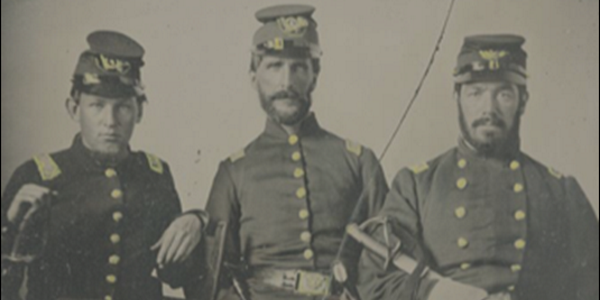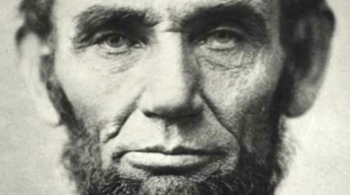The inverted pyramid was born during the Civil War
At about the time these Union soldiers were marching off to war, journalists invented the traditional inverted pyramid news structure. (Let’s pause and ponder that for a moment: The structure you use every day for your blog posts, intranet articles, web pages and emails is more than 150 years old.)

Reporters invented the inverted pyramid in the late 19th century, the product of a then-new communications technology — the telegraph, which was invented in 1854. (Let’s pause and ponder that for a moment too: The structure you use every day for your blog posts, intranet articles, web pages and emails was created for sending Morse Code!)
The telegraph meant that for the first time, reporters could get war stories home from battle without engaging a man on horseback to take the story home. That made the Civil War one of the golden ages of war reporting. For the first time, readers could learn about battles before the soldiers came home from war. They could find what was happening in the war zone in real time — or in what passed for real time back in the day.
Before the telegraph, reporters told war stories as chronological, human-interest narratives:
Two great armies meet on a hill. The first shot is fired;
a man goes down on this side. Another shot is volleyed,
and a soldier dies over here.
But what happens to a telegraph wire that runs along the ground during a ground war? Bullets hit it, corpses fall on it, cannonballs land on it and the wire gets cut. Send a chronological story over a telegraph wire, and it could get interrupted at any point …
Two great armies — RRRRIPPPP!
… and the story is over.
Hierarchical replaces chronological order.
So reporters started telling stories in hierarchical order: The blue team won! “Oh, I have more time; what a luxury.” Twenty men died! “Even more time; isn’t that nice?” And on and on until the story got out or the wire got cut, whichever came first.
One of the earliest inverted pyramid leads, according to journalism historian David T. Z. Mindich:

Photo credit: Public domain via Wikipedia
To The Associated Press: Washington, Friday, April 14, 1865
The President was shot in a theater to-night and perhaps mortally wounded.
The evolution of typesetting reinforced the pyramid. Editors dealing with columns of lead found it much easier to cut stories from the bottom rather than tweak them from the middle.
Today, more than 25 years of research tells us that while the inverted pyramid worked beautifully for distributing information over a telegraph wire, it does not work so well with a little subset of your audience known as humans.

Leave a Reply